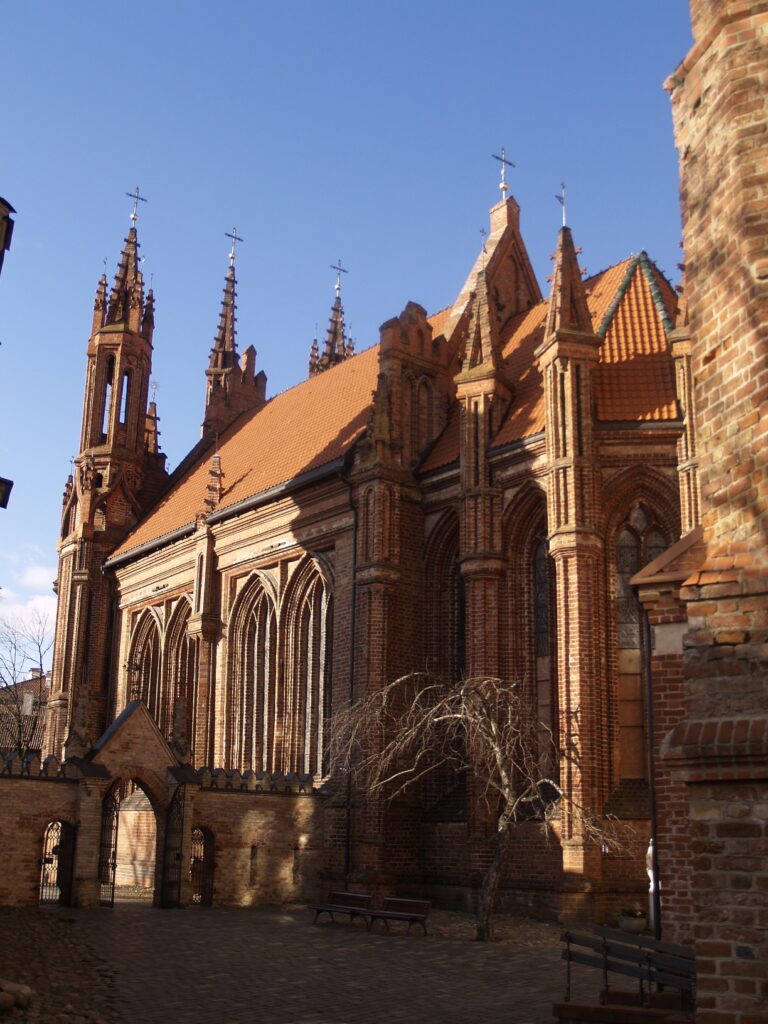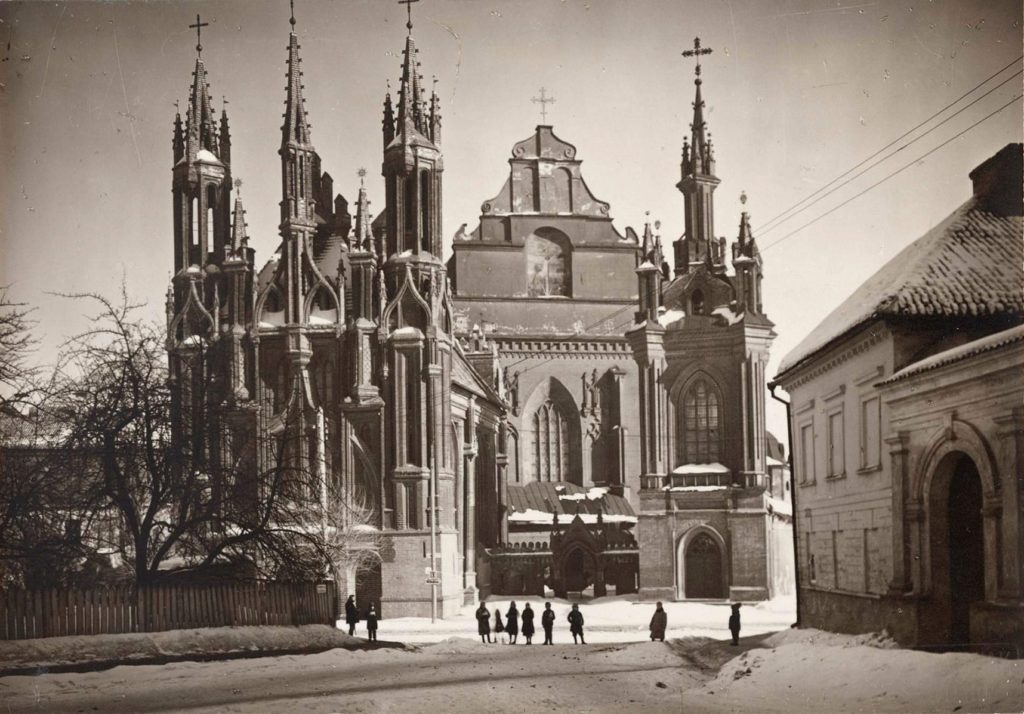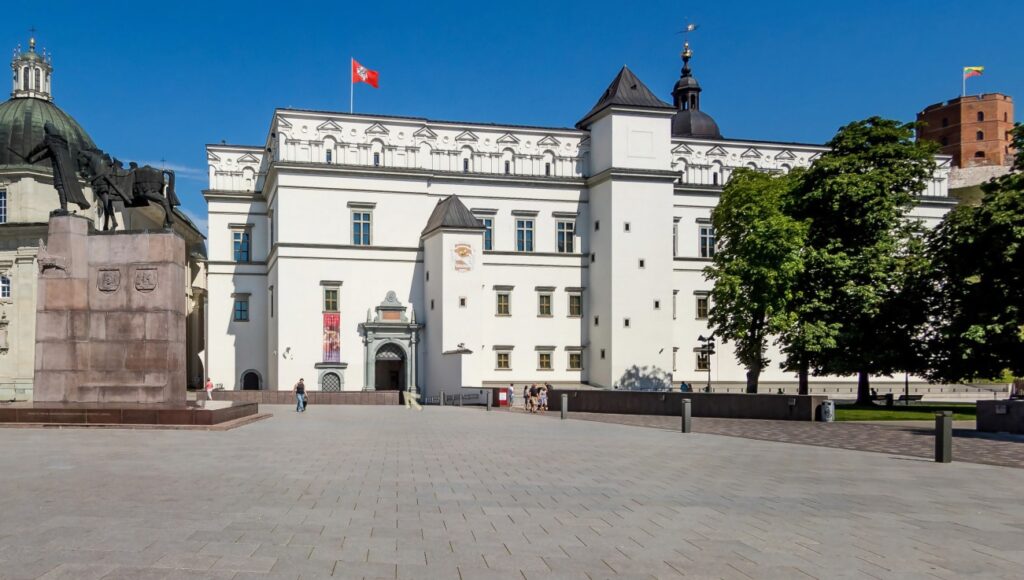Church of St.Anne

The Church of St.Anne (Maironio St.8) is probably the most famous structure in Vilnius. It is a masterpiece of late Gothic, nearly unsurpassed in the world.
The architecture of the church impresses all who visit it!
According to the latest data, it was designed (1495-1500) by Benedikt Rejt. It has survived into our days almost unchanged. The church was renovated in 1902-09, and the facade was reinforced in 1960-70.
Many legends are related with this church. Particularly popular is a story that on seeing St.Anne’s, Napoleon wanted to put it on his palm and carry it over to Paris. Actually, he used the church for the needs of the French cavalry.
A surprisingly light, harmonious and graceful building, it is noted for a rhythmical composition of vertical and curved lines. No solid masonry is placed above the portal, only pilasters, slender quadrangular poles, arches of three types and elegant pinnacled towers crowned with metal crosses.
Bricks of 33 varieties were used for decoration.
ARCHITECTURE of St.Anne’s Church

In the opinion of art scholar Vladas Drėma, the early Lithuanian coat-of-arms – Gediminas Columns – are accentuated in the facade composition.
Side facades and the presbytery are also very intricate, with high pointed-arch windows, buttresses and openworked towers.
INTERIOR of St.Anne’s Church

The interior of St.Anne’s does not equal its ingenious and flamboyant exterior.
Altars are Baroque, and the vaults are from the early 20th century.
The interior is minimalist to counter the flamboyant Gothic facade, and those who love it can attend a daily mass at 6 p.m.
The St Anne’s church has survived until today without changing for over 500 years and has become a symbol of the Lithuania capital!
Historical Photo Of St.Anne’s Church in Vilnius
A neo-Gothic belfry designed by Nikolaj Chagin (1873), stands near the church, and behind the belfry – a Baroque Chapel of Scala Christi (1617, reconstructed in 1820) that belongs to the ensemble of the Bernardine Church.







